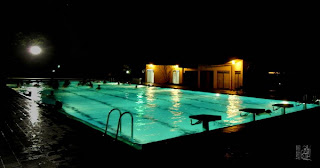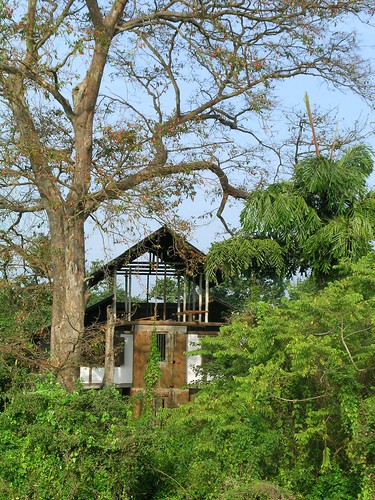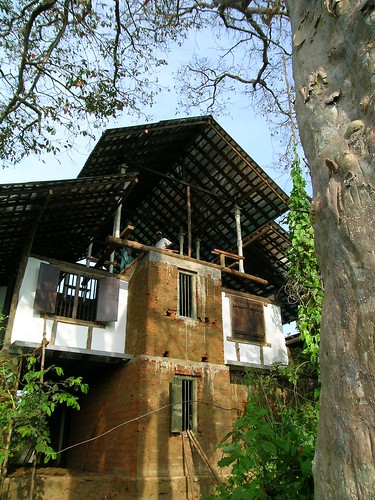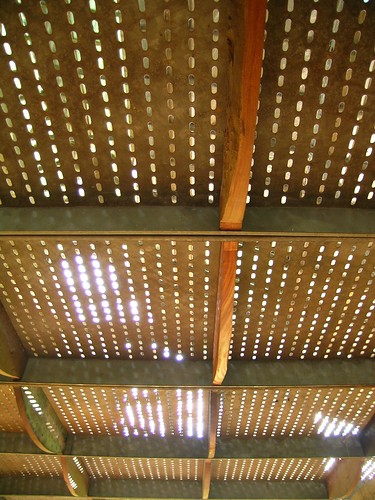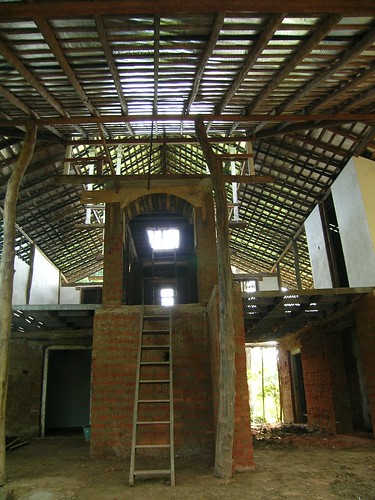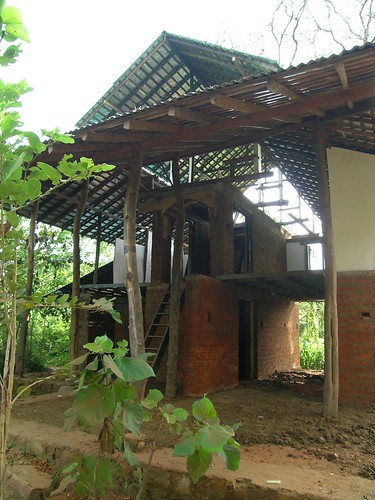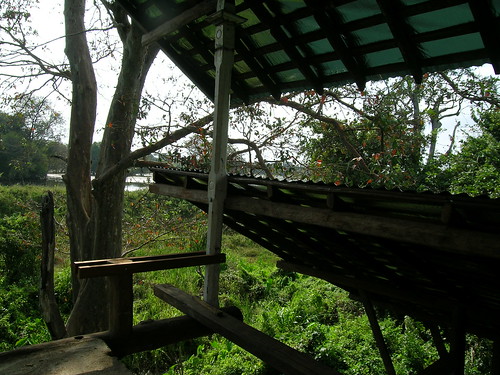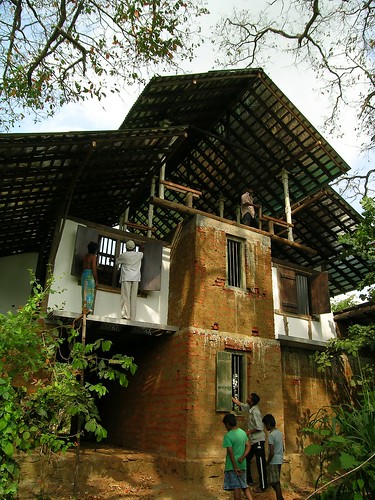For the first time, SLIA (Sri Lanka Institute of Architects) has organized and successfully concluded a student jamboree for the architecture students of the island. Nearly 80 students from the 2 architecture schools (Mora and CSA) took part in this event. Event was hosted at the MAS Institute of Management and Technology (MIMT) at Thulhiriya from 17th to 19th August.
One of the key events of this venture was to refurbish a school building at the Senanayaka School in the Thulhiriya area. Students accomplished the task of color washing (with the kind sponsorship of AkzoNobel paint) of a classroom block, landscaping the main pathway (with the kind sponsorship of Green Lanka Plants 033-4928131) during the second day of the Jamboree.
The event was organized by the SLIA via its educational arm, the Board of Architectural Education. I am proud to be a member of the group who organized this pioneering event. Hope there will be many more student jamborees to come and that SLIA will make an effort to turn these future events to international affairs.
Kudos to the organizers, board members and those who, whole heartedly supported this venture from the beginning.
Poster: UOM + CSA = Us > 'api'
Day1
Day2
Day3
Photos: Janaka Dharmasnea, Thejani Shalika, Pathum Gallage
Monday, August 27, 2012
Wednesday, August 15, 2012
Thursday, August 9, 2012
santhaanadeepaya by sagara jayasinghe (book #26)
Sagara has published a new book on churches of the Kalpitiya peninsula in Sri Lanka. This is Sagara's second book, his first being "Dwellings of Faith"
Wednesday, August 8, 2012
galmaduwa temple, kandy, sri lanka (#15)
A short turn off from the Kundasala Road just outside of Kandy and you will come upon a strange sight: the unfinished Vihara of Galmaduwa.
The Galmaduwa viharaya is an impressive building of strange architecture. As its local name suggests, it is basically a pavilion built of stone and brick. But a high gopuram gives it a Hindu identity. There is an ad mixture of Tamil-Hindu influence within the Buddhist place of worship.
J.P Lewis, says that the “Galmaduwa Viharaya probably enjoys the unique distinction of being the most Hindu-looking Buddhist temple in existence”
Describing its architectural features he says : “The central building is surrounded by a massive wall with an overhanging and deeply moulded cornice, the outer wall is pierced on three sides by five windows; on the fourth, which is on the west side, the place of the central window is taken by a doorway of slightly larger dimensions. The distance between the central building and the outer wall according to rough measurement is 14 feet. The former is 29 feet, the latter 16 feet square. There are but two doorways, one into the enclosure and one opposite it into the sanctum. They are each 6 feet wide, the windows 4 1/2 feet. The thickness of the outer wall is 3 ¼ feet, not including the mouldings of the wall of the sanctum 3 feet.
Photos: Pathum Magalle
information
Thursday, August 2, 2012
do good design (book #25)
Do Good Design: How Designers Can Change the World by David B. Berman
"Design creates culture. Culture shapes values. Values determine the future. Design is therefore responsible for the world our children will live in.”
David B. Berman’s important new book is honest, timely, and hard-hitting, delivered with in-your-face directness—it presents a strong argument regarding the inherent power of design to shape our world and takes on greed, excess, and the scheming tendencies of advertising and “targeted” visual communications. Full of pithy quotations, well illustrated (with wide-ranging examples of manipulative media and manufactured needs) and impressively annotated and cross-referenced, Do Good Design rails against the consumptive excesses of the so-called “developed world” and urges designers to help steer a better course for our planet—before it’s too late. David combines his keen observation skills with courage to question the status quo, expressing his marathon call for positive change with passionate zeal. In his words, “the future of civilization is our common design project.” - Robert L. Peters
@ Amazon.com
"Design creates culture. Culture shapes values. Values determine the future. Design is therefore responsible for the world our children will live in.”
David B. Berman’s important new book is honest, timely, and hard-hitting, delivered with in-your-face directness—it presents a strong argument regarding the inherent power of design to shape our world and takes on greed, excess, and the scheming tendencies of advertising and “targeted” visual communications. Full of pithy quotations, well illustrated (with wide-ranging examples of manipulative media and manufactured needs) and impressively annotated and cross-referenced, Do Good Design rails against the consumptive excesses of the so-called “developed world” and urges designers to help steer a better course for our planet—before it’s too late. David combines his keen observation skills with courage to question the status quo, expressing his marathon call for positive change with passionate zeal. In his words, “the future of civilization is our common design project.” - Robert L. Peters
@ Amazon.com
Wednesday, August 1, 2012
2 books by jared diamond (book #24)
 In his million-copy bestseller 'Guns, Germs, and Steel', Jared Diamond examined how and why Western civilizations developed the technologies and immunities that allowed them to dominate much of the world.
In his million-copy bestseller 'Guns, Germs, and Steel', Jared Diamond examined how and why Western civilizations developed the technologies and immunities that allowed them to dominate much of the world.Diamond is trying to explain inequality across regions of the world, the roots of power. He begins from the belief and his experience that people across the globe are fundamentally the same. It has not been a lack of ingenuity or intellect that explains why certain cultures have not progressed in the same way that others have. Instead, Diamond claims, it's all has been about geography and the shape of continents. More specifically, about wheat and cattle. People who lived in places where they were forced to spend nearly all their time feeding themselves (the hunters and gatherers) could never create enough food to allow others within their society to specialize in tasks besides food-production. On the other hand, in the cradle of civilization in the Middle East – the Fertile Crescent – high quality food and domesticated cattle were aplenty 9000 years ago. There was thus enough extra food to feed a small group of individuals who could specialize in the creation of such things as metal tools. Later, as the crops and the cattle from the Middle East spread east and west along the same latitude (and climate), the ability to produce and store food allowed the armies of Egypt to build the pyramids and the artists and poets of Greece and Rome to create culture. Subsequently, during the 16th century, when wheat and cattle were imported to the New World, they fueled the expansion of our continent.
Geography explains it all, Diamond believes. It's all about the hand people were dealt, the raw material hand. And then when those who had not developed technology early were invaded by those who had, that's the end of the story. Well, not quite the end. Diamond writes about the conquest of the Incas that began in 1532. Spain had been at war for some 700 years before they came to the New World. At that time, Spain was largely an agricultural country; its farms were dominated by livestock that had come from the Fertile Crescent. It was climate and the ability to domesticate animals within that climate that led to the expansion of agriculture, giving certain cultures a large head start in developing (the advantage of meat, milk and muscle, he calls it). Did you know that of the thousands of animals on earth, less than 15 that are large enough to perform work tasks have ever been domesticated? All but one (the llama) were native to the Middle East. Migration of both crops and animals happened far more easily east/west (the shape of the Eurasia continent) rather than north/south (the shape of the Americas) due to similarity of climate, day length and vegetation. I have never though about the shape of North and South America as inhibiting the flow of such things, but it makes total sense.
 'Collapse', companion volume to the bestseller 'Guns, Germs, and Steel', Diamond probes the other side of the equation: What caused some of the great civilizations of the past to collapse into ruin, and what can we learn from their fates?
'Collapse', companion volume to the bestseller 'Guns, Germs, and Steel', Diamond probes the other side of the equation: What caused some of the great civilizations of the past to collapse into ruin, and what can we learn from their fates?Subtitled “How Societies Choose to Fail or Succeed”, Diamond takes readers through a series of societies — past and present — that collapsed due to environmental damage. Some of societies included are the typical examples — Mayan culture in South America, Easter Island, and forest degradation in Haiti — while others were completely unexpected.
The section on modern societies is interesting, possibly because these societies are more tangible or understandable to us as readers. His looks in to societies and regions as varied as the genocide in Rwanda, environmental degradation in Haiti and the Dominican Republic and bit surprisingly environmental challenge faced by Australia, which I always assumed is doing fairly okay in this respect.
Jared Mason Diamond is an American scientist and a Pulitzer Prize winning author. Originally trained in physiology, Diamond's work is known for drawing from a variety of fields, and he is currently Professor of Geography at the University of California.
sourced from
Penguin.com (USA) and Wikipedia
Subscribe to:
Posts (Atom)














